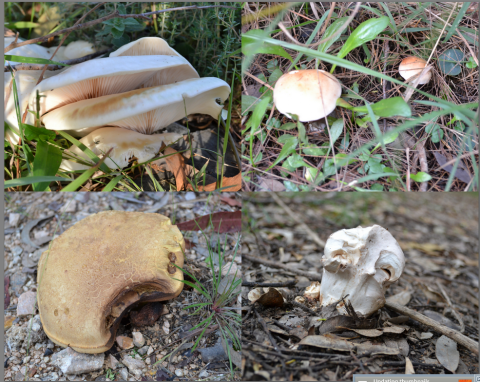Autumn is the time in the Cove people will notice many of the macro fungi start to fruit, that is produce mushrooms, puffballs, polypores and other visible fungi ( as oppposed to the invisible type). There are numerous fungi around the forests in the cove.
Did you know that the mushrooms and other fungi fruit you see are really only a small part of a very large system of fungi below the ground?
It only recently that botanists and others have been studying the complex structures and relationships of fungi and other plants and microorganisms in the forests. This relationship is titled the mycorrhizal association between fungi and plants and is highly beneficial to both plants and the fungi. In fact underground the roots of the trees and plants and fungi form a mycelium in which it is hard to distinguish between the plants and the fungi. Approximately 90% of plants have a mycorrhiza with fungi and 10-30% of food for the plant moves through fungi. This is particularly important for and there are studies currently being conducted in Western Australia regarding die back and the relationship with fungi. Some researchers are also finding that important fungi may be removed in some potting mixes which means that trees bought from nurseries do not properly establish.
In the photos from the top left, first is a large white mushroom on the tree stump is busy helping with the decomposing cycle, and the second one is mycorrhizal type mushroom found in amoungst the trees. On the left below is a Bolete – the dark yellow spongy type of fungi – this one has a big bite which suggests a mammal or reptile has eaten it, and another white Truffle Like fungi which has nearly all been eaten possibly by a bandicoot?
If any one has a photo of a Chlorophyllum hortense – a white toadstool with a scaly top usually found in gardens, or a Russula persanguinea mushroom found underneath eucalypts in the forest please feel free to paste them on this site.
Things to do with the kids
Make a mushroom spore print.
- Remove the stem by cutting it where it meets the cap.
- Put the cap on a piece of paper, gills facing down.
- Cover the paper and cap with a bowl or tub of some sort - to maintain the humidity around the cap.
- Leave it for a few hours and then remove the tub and cap. You should have a print made from the millions of spores, if it is faint leave it for longer.



